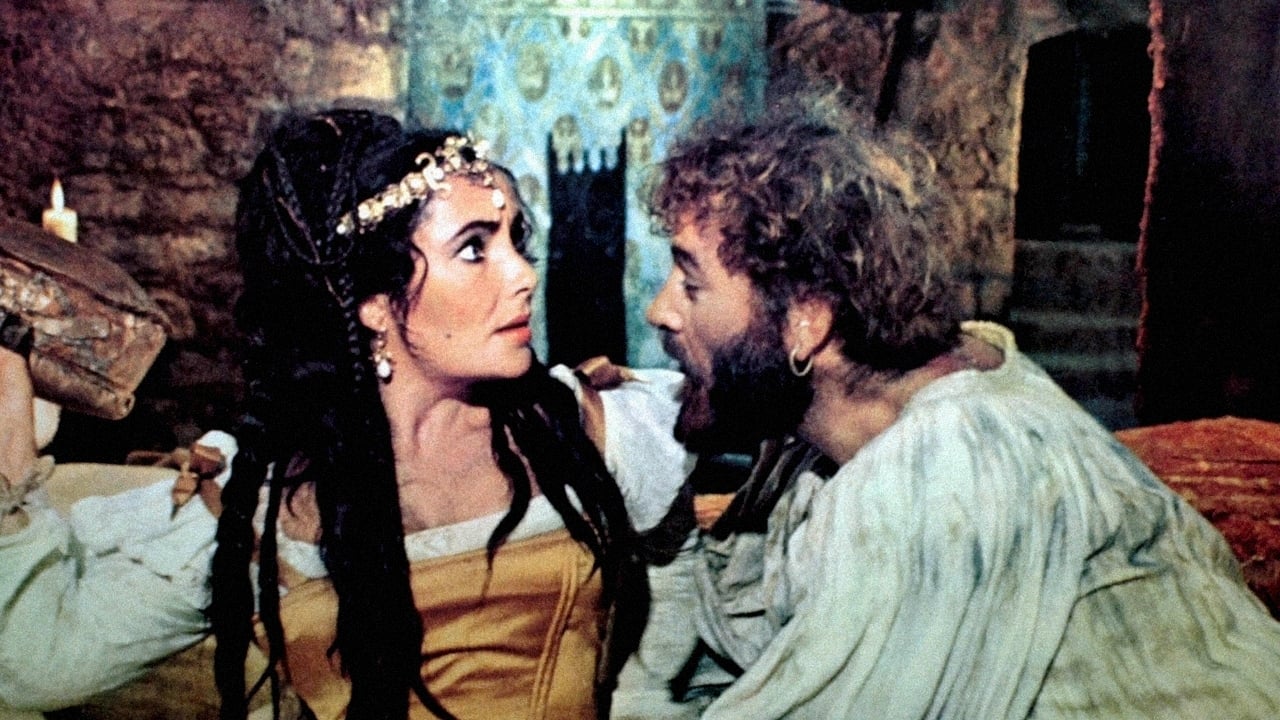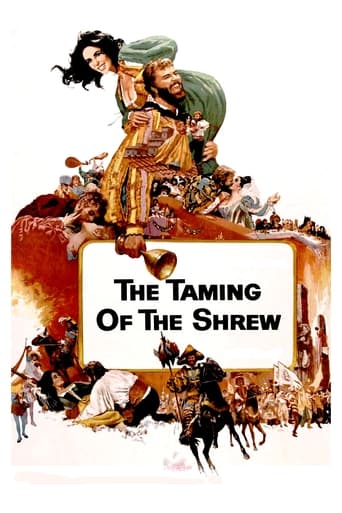

Overrated and overhyped
... View MoreHighly Overrated But Still Good
... View MoreIt isn't all that great, actually. Really cheesy and very predicable of how certain scenes are gonna turn play out. However, I guess that's the charm of it all, because I would consider this one of my guilty pleasures.
... View MoreA film of deceptively outspoken contemporary relevance, this is cinema at its most alert, alarming and alive.
... View Morefirst time, I saw it when I was a child. and, for me, it remains one of the most provocative films . the motifs - many. maybe, too many. because it is Shakespeare but it is , in same measure, Taylor and Burton. it is a savage show. it is one of special films using you as part of it. all is remarkable. all is exciting. and this is the key for discover it . again and again. as a trip in a world who, so far by yours,preserves the flavor of rain, the smells of wed grass, the drops of carnival. so, a rare film. because it is just an experience.
... View MoreWrong stars, wrong director. The comedy, if any, was missed by a mile and simply reduced to silliness. Taylor seemed to be having a little more fun than Burton, although he laughed a lot, in a fake and forced sort of way. Comedy was just not Burton's bag. He wasn't funny or even amusing. Nor was anyone else, and that goes for the production as a whole. Zeffirelli gives an impression of having concentrated more on the sets, costumes and extras. Perhaps it was the writing, by the adapter. But the direction was seriously serious. Everyone failed to capture what amusement there might have been. Kiss Me Kate, by Cole Porter, 1949, had better words and music. That was Porter's biggest hit, and a very ingenious take on the play. It is impossible to believe that both of these films rate 7.2 on IMDb, when Kiss Me Kate is so immeasurably superior. At times the lines seemed to be directly pinched from Cole Porter, eighteen years later, though perhaps they were originally penned by William.What were the good points ? I thought both Burton and Taylor fitted their parts physically, although some critics think they were too old. With Kate systematically rebuffing her suitors she might well have been heading for old maidenhood. With Petruchio so mercenary about the practical side of marriage, I think he might well have been fairly mature. So I don't think their ages were against them. But this was not an entertaining movie. The roles should be played as written, deadpan not dopey. I wonder what Princess Margaret thought of it at the Command Performance in 1967.
... View MoreWhile not as memorable or iconic as his Romeo and Juliet (1968), Zeffirelli's The Taming of the Shrew (1967) is a delightful and vivid imagining of one of Shakespeare's most infamous plays.Like the 1968 R&J, Taming is set in Italy, but in terms of atmosphere, the two could not be more different. This production feels more earthy with its muddy streets and overdressed characters, unlike the later film, which feels romantic and almost ethereal. This approach works best for such a bawdy, vulgar comedy, filled with witty repartee, innuendo, and slapstick.Richard Burton is oafish, rambunctious, and a little sexy as Pertruchio, but it's Elizabeth Taylor who steals the whole film as the titular shrew. Despite never having been involved in a Shakespeare production on stage or in front of a camera, she delivers the verse well and gives Katherina an inner fire which never dies, even after she is supposedly "tamed" by Pertruchio. Her delivery of the controversial speech in the final scene is filled with irony. Though she seems to be extolling a wife's total subservience to her spouse, it's obvious she is only playacting for the public and her marriage will be more equal than Petruchio realizes.A good adaptation, especially for those who prefer traditionally staged Shakespeare to more modern re-imaginings.
... View MoreDespite elegant costumes and its much-lauded direction by Franco Zeffirelli, this Shakespearean marital comedy failed to deliver. As a viewer, I'd say that this film's intended magic missed its mark.This film's disappointment-factor was mainly due to its 2 lead actors, Elizabeth Taylor & Richard Burton, for (1) Being too old for their parts (She, 35. He, 42), as well as (2) Both of them being co-producers of this less-than-satisfying production.In my opinion, these 2, together, literally ground Shakespeare's 16th Century play right into the dirt without even giving it a fair chance to really breathe and come to life.Featuring lots of irksome scenery-chewing by Taylor (who, as usual, wore way too much mascara and eyebrow pencil) and plenty of pompous bellowing by Burton (who was nothing but an egocentric windbag), this 1967 costume comedy certainly did wonders for encouraging spousal abuse from both sides of the matrimonial bed.Taylor, as Katharine (the shrew), scored high points through verbal castration and the flat refusal of any sexual contact with her partner. While, on the other hand, Burton, as Petruchio (the tamer), did his best through humiliation tactics and the forced starvation of his mate.(My-oh-my, aren't these 2 just a wonderful pair?) Apparently, this $4 million production was a huge, box-office hit upon its initial, 1967 release. But, now, 47 years later, it sucks. Had this film's 2-hour running time been reduced by a good 30 minutes, then, yes, perhaps that might've helped matters, somewhat.
... View More